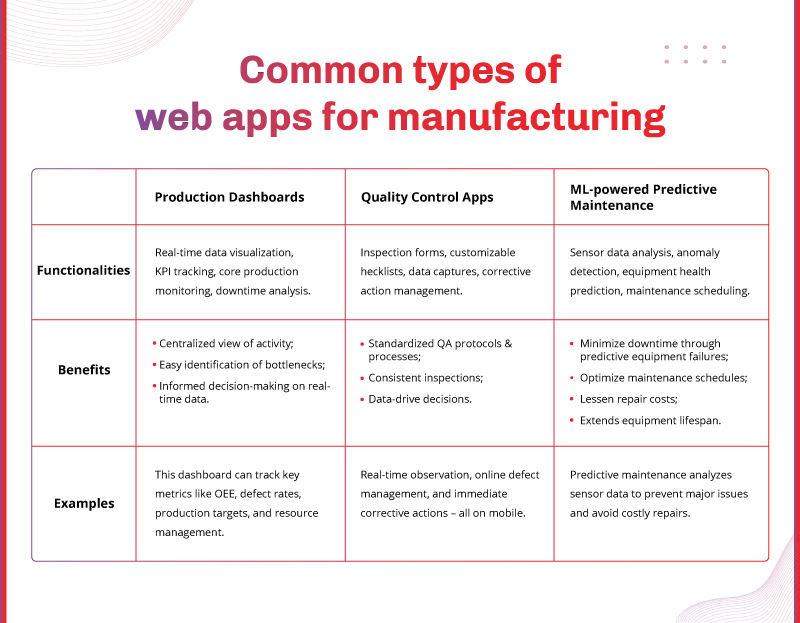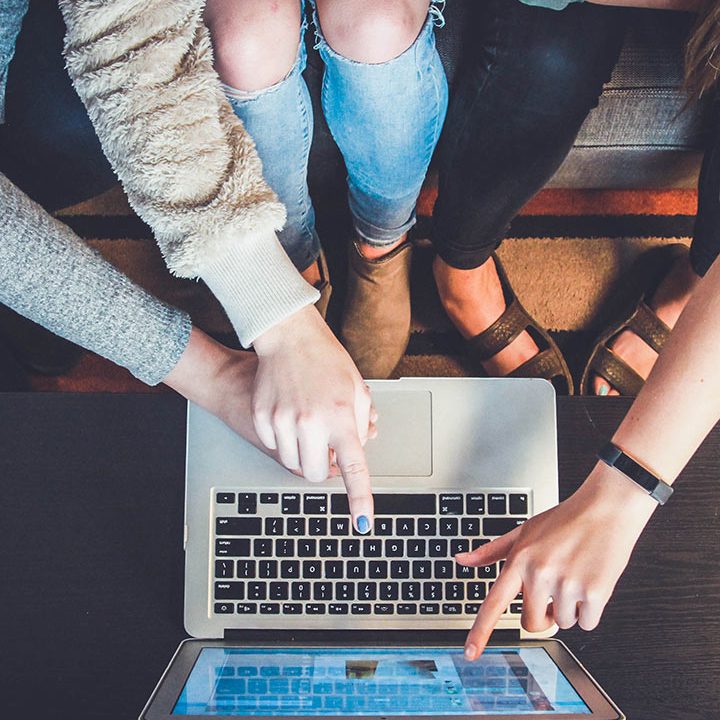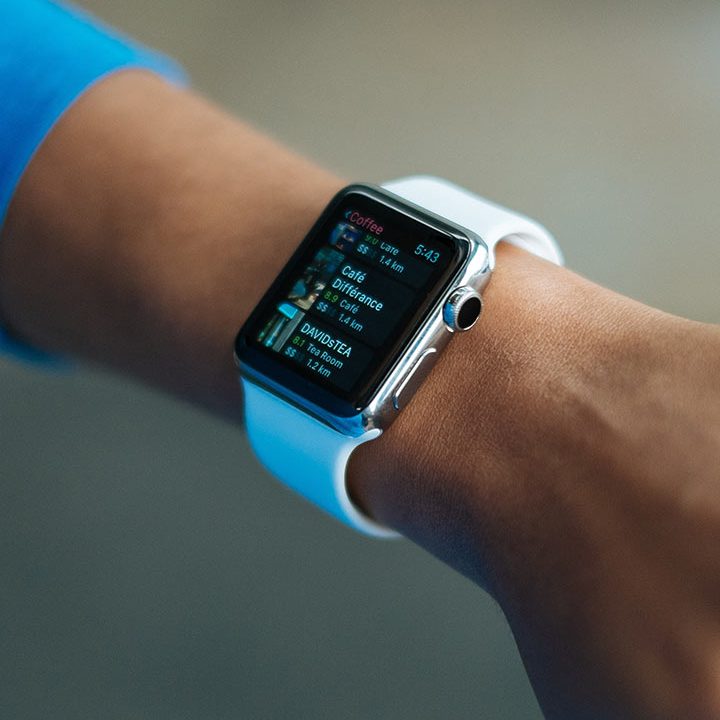Web App Development in Manufacturing
Did you know that there are countless factory floors on which misplaced inventory leads to frantic searches, production and delivery delays; bringing the progress to a complete halt?
This is a shrewd reality for many players in the manufacturing industry with data siloes & outdated systems. It’s pretty clear to us that a simple one-size-fits approach won’t cut it anymore.
It’s time for industry & business-specific web application development– a 21st century approach to address the unique challenges set in the manufacturing world.

Now try imagining a world where production lines don’t stop, inventory levels are automatically optimized, and QA occurs seamlessly within the production steps.
This is the level of automation a manufacturer would get with web application development. Here, unlike generic low-code apps, we implement a pain point specific approach, allowing us to transform your business, one feature at a time.
The Key to Effective
Web Application Development
Being able to develop highly helpful web applications, companies and developers require a blend of technical expertise & user-centric designs. The following key elements can elevate the development process with strong, reliable and scalable applications.
1. Well Thought-Out Plans
The initial step to begin is to define a project’s goals, audience, and needed features. This leads to formation of desired teams, breaking down tasks into sprints, and creating an expansive roadmap to guide future development.
This step also involves getting primary stakeholders involved as early as possible to gather feedback through the process.
2. Designs- how about making ‘em responsive?
Today’s user may just have three screens opened simultaneously. Designing an application that works smoothly whilst adapting to the devices is a must for any business.
3. Performance-First Approach
All of us, even you who’s reading this, wish to have things on-the-go. This applies to applications as well- they need to be fast; they need to be present.
In practical terms, developers employ some techniques like:
Minimizing page load times by optimizing images, using browser catching or reducing HTTP requests.
Compressing and minifying code to streamline delivery and later deployment.
Employ CDNs, or Content Delivery Networks, to have an extra performance boost.
4. Future Scalability
Designing the web application development process by keeping future scalability in mind is one of the crucial things to do.
Dedicated developers must anticipate a growth in traffic, user demand, along with website conversions. Thus, efficiently distributing this traffic through strategies like load balancing or caching helps maintain the application’s performance even under constant pressure.
5. Maintainable Code
We live in an iterative world. Thus, developing the tech that surrounds us iteratively makes perfect sense, right?
The best web app developers should employ modular designs to have a stack of reusable components ready, resulting in a clean & maintainable codebase. With this, developers usually save up their code to help out other developers in need & make a collaborative environment.
6. Version Control
Leveraging a version control system, like Git, powers up the web application development processes by
- – Implementing tracking changes;
- – Seamlessly collaborative personalized workspaces;
- – Isolated feature development;
- – Streamlining features; and
- – Simplifying bug fixes with version history.
This creates a collaborative environment where dedicated developers in India work efficiently & iterate freely together.
7. High Security
Building a highly secure web application needs consistent vigilance on the server side. Web application developers usually:
- – Implement stringent authentication & authorization to control access.
- – Sanitize user inputs to prevent attacks like SQL injection & XSS.
One of the main ways of maintaining constant security within the system is by updating the software and libraries with the latest patches.
8. Thorough Testing
The best web application developers guarantee unmatched quality while developing web applications by implementing an intricate multi-layered testing approach. Some of the popular methods are:
- – Writing unit tests to test individual code components;
- – Developing integration tests to establish and verify seamless collaboration between modules; and
- – End-to-end tests to replicate real user flows & catching potential issues.
A leading web application development company utilizes CI/CD: DevOps Pipelines to automate tests and deployments even further. This heavily ensures a culture of consistent high quality.
9. Accessibility
Web apps, nowadays, must be built with inclusivity in mind. Developers and companies must owe their fair share in developing an app that everyone can access, even the ones with hardcore disabilities.
This, not only increases the user base, but sets a strong ‘here-for-all’ precedent.
10. Implementing SEO-driven Strategies
Optimizing applications for globally used search engines by using specialized strategies such as adding descriptive meta tags and keyword insertion. Here, dedicated developers create a sitemap that leverages SEO-friendly elements, like the URL, to increase the app’s discoverability.
These are a few key elements to keep under consideration while selecting the right approach to your web application development process.
- – Streamlined product development
- – Optimized inventory management
- – Exceeding customer expectations
Why
App Development for Manufacturing
 Manufacturers look to increase efficiency and have data-driven decisions, making it crucial for long-term success. Here are some ways in which web application development can make this happen:
1. Streamlined Operations
Web apps automate routine tasks like inventory management, production scheduling, and order tracking. This heavily reduces human error, freeing up valuable resources to establish smoother production workflows.
2. Enhanced Collaboration
Web applications, once properly deployed, become hubs for sharing intel and communicating across departments.
Think of- real time data dashboards, project management tools, and sub-platforms for internal communication. Here, web apps allow everyone to be on the same page to collaborate seamlessly across tasks.
3. Improved Internal & External Support
Web apps made for manufacturers can also provide experts portals for customers.
Such as, users being able to track orders, check product descriptions, access technical documents, and even place orders directly.
Essentially, web application development can help benefit manufacturers with self-service abilities, with enhanced customer service & relations.
4. Data-driven Decision Making
Web applications contain the ability to gather valuable data about manufacturing, such as: production processes, equipment & factory performance, and ongoing customer interactions.
Through this data, manufacturers can identify:
Manufacturers look to increase efficiency and have data-driven decisions, making it crucial for long-term success. Here are some ways in which web application development can make this happen:
1. Streamlined Operations
Web apps automate routine tasks like inventory management, production scheduling, and order tracking. This heavily reduces human error, freeing up valuable resources to establish smoother production workflows.
2. Enhanced Collaboration
Web applications, once properly deployed, become hubs for sharing intel and communicating across departments.
Think of- real time data dashboards, project management tools, and sub-platforms for internal communication. Here, web apps allow everyone to be on the same page to collaborate seamlessly across tasks.
3. Improved Internal & External Support
Web apps made for manufacturers can also provide experts portals for customers.
Such as, users being able to track orders, check product descriptions, access technical documents, and even place orders directly.
Essentially, web application development can help benefit manufacturers with self-service abilities, with enhanced customer service & relations.
4. Data-driven Decision Making
Web applications contain the ability to gather valuable data about manufacturing, such as: production processes, equipment & factory performance, and ongoing customer interactions.
Through this data, manufacturers can identify:
- – KPIs to address rooms for improvements
- – Optimize production lines & other important processes
- – Potential issues in the system
- – Valuable insights to inculcate in the future
- – Better identify & resolve problems
- – Reduce system downtime
- – PGet greater visibility about core processes, from offsite locations
 Here’s a breakdown of some key web app categories that can be developed to address specific needs within manufacturing facilities:
1. Production Dashboards
Here’s a breakdown of some key web app categories that can be developed to address specific needs within manufacturing facilities:
1. Production Dashboards
- – Functionalities- Real-time data visualization, KPI tracking, core production monitoring, downtime analysis.
- – Benefits- Centralized view of activity; easy identification of bottlenecks; informed decision-making on real-time data.
- – Examples- A dashboard such as this may display overall equipment effectiveness across processes, defect rates, expected & achieved production target, and resource management.
- – Functionalities- Inspection forms, customizable checklists, data captures, corrective action management.
- – Benefits- Standardizing QA protocols & processes; consistent inspections; data-drive decisions; all to improve defect management.
- – Examples- Factory inspectors can use an app like this to record real-time observations, manage defects online, and initiate immediate corrective actions.
- – Functionalities- Sensor data analysis, anomaly detection, equipment health prediction, maintenance scheduling.
- – Benefits- Minimize downtime through predictive equipment failures; optimize maintenance schedules; lessen repair costs; extends equipment lifespan.
- – Examples- A predictive maintenance tool may analyze the sensor data from the machines to identify and prevent any issue turning major. This allows data-based interventions & avoids costly repairs.
- Slow Manual Recommendations Traditional methods for recommending blends & recipes were labor-intensive & slow, resulting in missed opportunities with clients’ blends.
- Composition in a Flux These delays meant that the recommendations arrived after the plant’s composition was shifted, rendering them ineffective.
- Real-time Biofuel Insights We built an event-based IoT platform that transmitted the data (plant composition) to a centralized system.
- AI/ML powered analysis Praj’s data scientists, in collaboration with our team, trained an AI model to analyze data & generate ideal product/recipe recommendations when any threshold is breached.
- Automated actions Recommendations, now, are delivered in real-time via SMS, email, and CRM; even creating draft purchase orders for easier product acquisition.
- Precise Recommendations The trained AI/ML model has an impressive 87% accuracy whilst predicting the perfect product ecipe for each composition.
- Yield Jumps 12%! Praj’s clients are experiencing a major average increase in the ethanol yield across their plants.
- Data-driven Decisions The newly built system allows digital record keeping & automates reporting, giving on-the-go access to valuable data.
Manufacturing App Development Services
Together, we’ve proved how digitizing manufacturing isn’t just a dream anymore- we’ve made it happen. This innovative system shows the power of AI to optimize industrial processes, leading to real-world results. To gain access to the full case study, click here.








